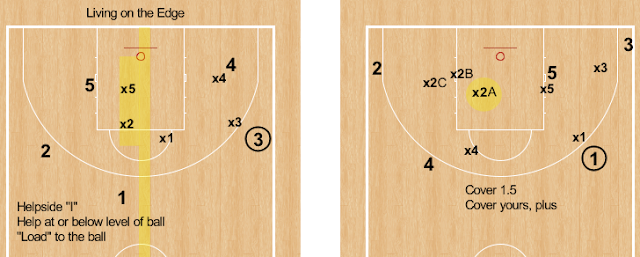The Internet shares a wealth of content. Surfing the Net accesses great information and piles of trash. Which is not to say I don't enjoy a great dog video (@RexChapman).
Twitter has many great feeds. There are no "top ten" only feeds that drop knowledge, video, or inspiration on us...and these are absolutely in no particular order. Some are well known, others less so. Share your "Go To" feeds.Quarantine day 99:— Tomthunkit™ (@TomthunkitsMind) June 29, 2020
Wait for it. I miss hoops... pic.twitter.com/HSzcPcmc6o
via RexChapman 01#FixThePolice
@GentsCoachD (Chris Dorsey)
@BBallImmersion (Chris Oliver) with video on Twitter, YouTube, and elsewehereInterested in 🤚🏽out 🏀⁉️ Join my Zoom clinic‼️ I’ll cover concepts on spacing, screening angles, & flow. Access to 💯 coaches....🤷🏽♂️— Chris Dorsey (@GentsCoachD) June 29, 2020
🗓: July 5th
⏰: 6pm CST
🚨: Registration in bio 🔗 pic.twitter.com/TuIs6hCRYR
@Coach DeMarco (Coach DeMarco, EdD)
@BBallBreakdown (Coach Nick)THE EVOLUTION OF THE TRIANGLE OFFENSE @crusaderball23 takes us through the Triangle Offense with each of his teams. MUST WATCH!https://t.co/wD5Ae5ob2V— Coach DeMarco, EdD (@Coach_DeMarco) June 29, 2020
@PickAndPopNet (Zak Boisvert)
@CoachDaniel (Coach Daniel) Often links to his YouTube Channel
@AlanSteinJr (Alan Stein, Jr) - inspirational thoughts and quotes
@John_Leonzo (John Leonzo)Oh boy, I messed up! #3 and #4 need to be switched! You (obviously) can’t offer feedback or correct them until they’ve done it. 100% my error 🤦🏼♂️ https://t.co/2nUhUic3pg— Alan Stein, Jr. (@AlanSteinJr) June 24, 2020
@JonGordon11 (Jon Gordon) - leadershipCutting the stunt also allows to a scoring opportunity for the cutter if their defender still elects to stunt at the popping screener (3/3) pic.twitter.com/AyS1iQRJjg— John Leonzo (@John_Leonzo) June 26, 2020
@Spinella14 (Adam Spinella)Today let’s:— Jon Gordon (@JonGordon11) June 29, 2020
1. Attack this day with enthusiasm
2. Stay positive
3. Be thankful
4. Learn, improve, grow
5. Be a blessing to others
6. Replace HAVE TO with GET TO
7. Focus on Solutions
8. Control the controlables
9. Let go of things you can’t control
10. Be your best
SLOB by Tony Bennett and Virginia that they use with a short clock pic.twitter.com/4cT1CFqWlL— John Zall (@John_Zall) June 29, 2020
@HalfCourtHoops (Gibson Pyper)
@EuroBasket (FIBA EuroBasket)



























